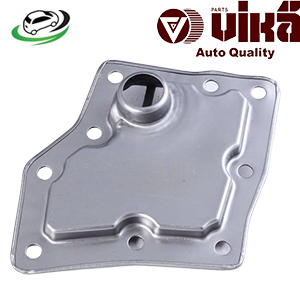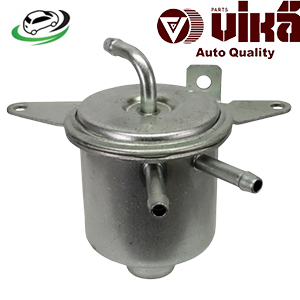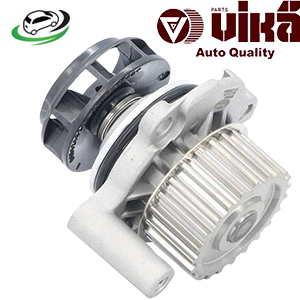-6%
Get Audi TT Quattro Water Pump 22121011 in Kenya
The water pump is a critical component in an internal combustion engine, responsible for circulating coolant through the engine and maintaining optimal temperature levels. Without it, the engine could overheat, leading to severe damage and potential engine failure. Understanding the importance of the water pump, its functions, benefits, and maintenance is crucial for ensuring a vehicle’s engine runs efficiently.
This comprehensive guide will explore the water pump’s design, its role in engine cooling, the signs of a failing pump, and the best practices for maintaining it.
1. What is a Water Pump?
The water pump is a mechanical device designed to circulate coolant (also known as antifreeze) from the radiator to the engine and back. Its primary purpose is to maintain a stable engine temperature by dissipating the heat generated during combustion. It plays a vital role in the cooling system of the vehicle, working in tandem with other components like the radiator, thermostat, and coolant hoses.
In most vehicles, the water pump is driven by the engine’s crankshaft using a belt, typically the serpentine belt or timing belt. The pump contains an impeller, which is a rotor designed to create fluid flow. As the engine runs, the water pump keeps coolant moving continuously to regulate the temperature and prevent overheating.
2. Components of a Water Pump
A water pump consists of several essential parts that work together to circulate coolant effectively:
- Housing: The water pump’s housing is typically made of aluminum or iron and encloses the internal components, protecting them from external elements.
- Impeller: The impeller is a crucial part of the pump, usually made from plastic or metal. It spins inside the housing, creating a centrifugal force that moves the coolant through the engine.
- Pulley: The pulley is attached to the engine’s belt system and rotates the impeller by transferring engine power to the pump.
- Bearing and Shaft: The bearing supports the shaft that holds the impeller and connects it to the pulley. The shaft and bearing allow the impeller to spin smoothly, driven by the pulley.
- Seal: The water pump contains a seal that prevents coolant from leaking out of the pump housing while keeping contaminants from entering the system.
3. How the Water Pump Works
The water pump is a centrifugal pump that forces coolant through the engine. When the engine is running, the crankshaft or timing belt drives the pump pulley, which rotates the impeller. The impeller creates a suction that pulls coolant from the radiator, pushing it through the engine block and cylinder head.
As the coolant absorbs heat from the engine, it becomes hotter and is then pumped back to the radiator, where it cools down before re-entering the system. This continuous cycle ensures that the engine operates at a safe and efficient temperature.
The water pump works closely with the thermostat, which regulates coolant flow based on engine temperature. When the engine is cold, the thermostat remains closed to prevent coolant from flowing through the radiator, allowing the engine to warm up. Once the engine reaches its optimal operating temperature, the thermostat opens, allowing the water pump to circulate coolant throughout the system.
4. Importance of the Water Pump
The water pump is an integral part of the vehicle’s cooling system, providing several critical functions:
A. Regulating Engine Temperature
The water pump ensures that coolant circulates throughout the engine, preventing it from overheating. High temperatures can cause severe engine damage, including warping of the cylinder head, piston seizure, and damage to the head gasket. By maintaining an optimal temperature, the water pump helps ensure the engine runs smoothly and efficiently.
B. Preventing Engine Overheating
Without proper cooling, the engine would overheat within minutes, especially during heavy loads, high-speed driving, or hot weather conditions. The water pump continuously moves coolant to the radiator, where it dissipates heat and prevents engine overheating.
C. Enhancing Fuel Efficiency
An efficiently running engine leads to better fuel economy. The water pump ensures that the engine operates at an optimal temperature range, which allows for efficient combustion. When the engine runs too hot, it can cause inefficient fuel consumption, reducing overall fuel efficiency.
D. Extending Engine Lifespan
Overheating is one of the leading causes of engine failure. The water pump plays a critical role in prolonging the engine’s life by keeping temperatures within the desired range. Proper engine cooling minimizes wear and tear, reducing the risk of major engine problems over time.
5. Signs of a Failing Water Pump
Like all mechanical components, water pumps wear out over time and may eventually fail. Early detection of water pump issues can prevent catastrophic engine damage. Here are some common symptoms of a failing water pump:
A. Coolant Leaks
One of the most common signs of a failing water pump is coolant leakage. If the pump’s seals or gaskets are worn, coolant can leak from the pump housing. You may notice puddles of coolant under the vehicle, especially near the front of the engine. Low coolant levels can lead to engine overheating, so it’s crucial to address leaks as soon as they are noticed.
B. Overheating Engine
If the water pump fails, coolant will not circulate properly, leading to engine overheating. An overheating engine may cause the temperature gauge to rise rapidly, or you might see steam coming from the hood. Overheating can cause significant engine damage, so it’s essential to stop driving and seek repairs if you notice these signs.
C. Whining or Grinding Noise
A failing water pump bearing may produce a whining or grinding noise as it wears out. This noise typically increases with engine speed and is a clear indication that the pump is not operating efficiently. In such cases, the water pump may need to be replaced to prevent further damage.
D. Rust or Corrosion on the Pump
Over time, the water pump can become corroded or develop rust due to coolant impurities or exposure to moisture. Visible rust or corrosion on the water pump’s housing may indicate that the pump is nearing the end of its lifespan and may need to be replaced.
E. Engine Coolant Warning Light
Modern vehicles often have dashboard warning lights that indicate coolant or engine temperature issues. If the coolant warning light illuminates, it could signal a problem with the water pump or the overall cooling system. This should be investigated immediately to avoid engine damage.
6. Maintenance of the Water Pump
Proper maintenance of the water pump and the overall cooling system is crucial for preventing issues and ensuring the vehicle’s longevity. Here are some best practices for maintaining a water pump:
A. Regular Coolant Changes
Coolant, also known as antifreeze, plays a vital role in preventing the engine from overheating. Over time, coolant can become contaminated with debris and lose its effectiveness. To ensure the water pump continues to function correctly, it’s essential to change the coolant at the intervals recommended by the vehicle manufacturer, typically every 30,000 to 60,000 miles.
B. Inspecting the Cooling System
During routine maintenance, it’s important to inspect the entire cooling system, including the water pump, radiator, thermostat, and hoses. Checking for leaks, rust, or signs of wear can help detect potential issues early before they lead to more significant problems.
C. Replacing the Timing Belt
In many vehicles, the water pump is driven by the timing belt. When the timing belt is replaced, it’s often recommended to replace the water pump as well. This ensures that both components are in good working order and prevents the need for additional labor costs later if one fails.
D. Monitoring Coolant Levels
Regularly checking coolant levels is essential for keeping the water pump and cooling system functioning properly. Low coolant levels can cause the pump to run dry, leading to overheating and potential damage. If you notice coolant levels dropping frequently, it could indicate a leak or other issue that needs to be addressed.
E. Addressing Warning Signs Early
Paying attention to warning signs such as coolant leaks, unusual noises, or overheating can help prevent costly repairs. If any of these symptoms are present, it’s important to have the water pump inspected and replaced if necessary.
7. Replacing the Water Pump
When a water pump fails, it must be replaced to restore the engine’s cooling system. Replacing a water pump is a labor-intensive process, as it often requires removing various engine components, including the timing belt or serpentine belt. It’s recommended to have this repair performed by a professional mechanic to ensure it’s done correctly.
The cost of replacing a water pump can vary depending on the vehicle make and model, but it typically includes both the cost of the pump itself and the labor involved in the replacement. Despite the expense, replacing a failing water pump is essential to preventing further engine damage.
8. Conclusion
The water pump is an essential part of a vehicle’s cooling system, responsible for circulating coolant and maintaining engine temperature. By preventing overheating, the water pump plays a crucial role in enhancing engine performance, fuel efficiency, and longevity. Understanding the signs of a failing water pump and following proper maintenance practices can help ensure the pump operates efficiently throughout the life of the vehicle. Regular inspections, timely coolant changes, and addressing any warning signs early will help keep the water pump and the engine in optimal condition.
Follow us on Facebook for more parts.




Reviews
Clear filtersThere are no reviews yet.